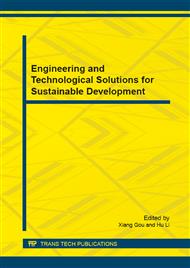p.237
p.242
p.247
p.251
p.256
p.260
p.266
p.272
p.279
Numerical Simulation of Indoor Thermal Environment of a Double-Skin Facade Office with Different Shutter Angles
Abstract:
Airflow and heat transfer simulation was conducted for a double-skin façade (DSF) system equipped with shading devices in the cavity, using computational fluid dynamics (CFD) with RNG turbulence model and PISO algorithm, for five conditions of slat angles (θ=0°, 30°, 45°, 60°, 90°). The present study indicates that the presence of shading devices influences the temperatures, the ventilation rate and the air distribution in the DSF system. Besides, the different angles will make different influences.
Info:
Periodical:
Pages:
256-259
Citation:
Online since:
November 2014
Authors:
Price:
Сopyright:
© 2014 Trans Tech Publications Ltd. All Rights Reserved
Share:
Citation:


